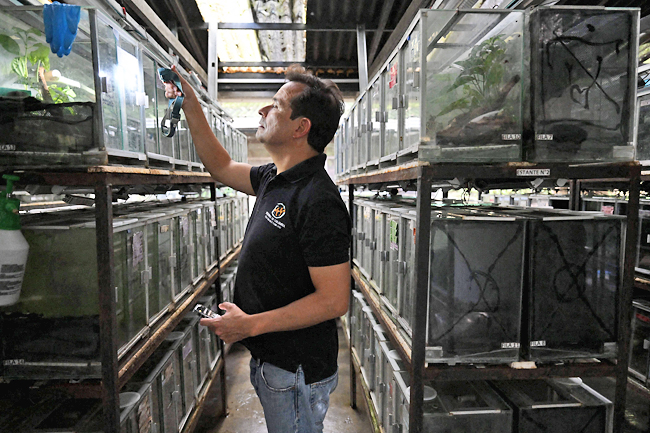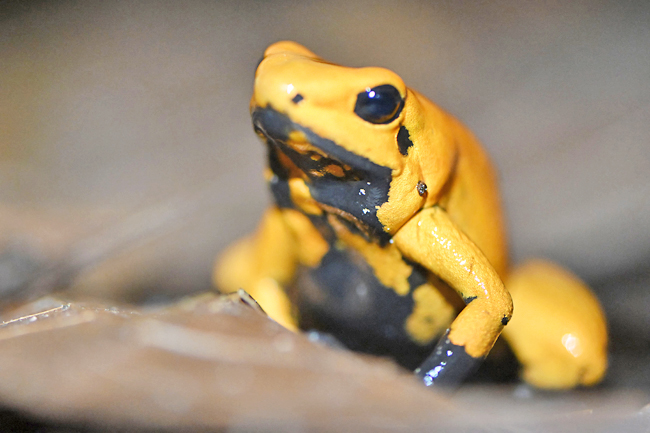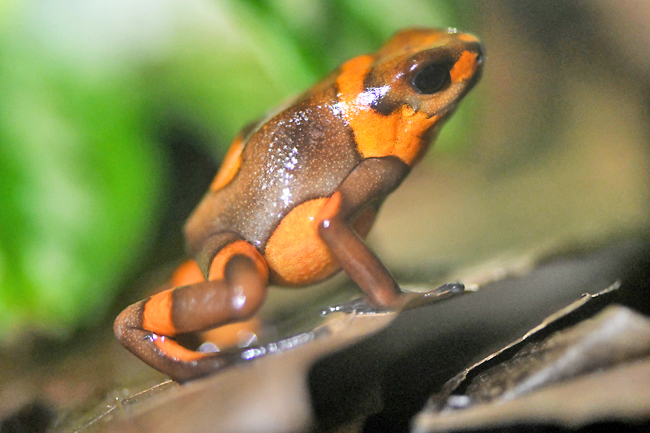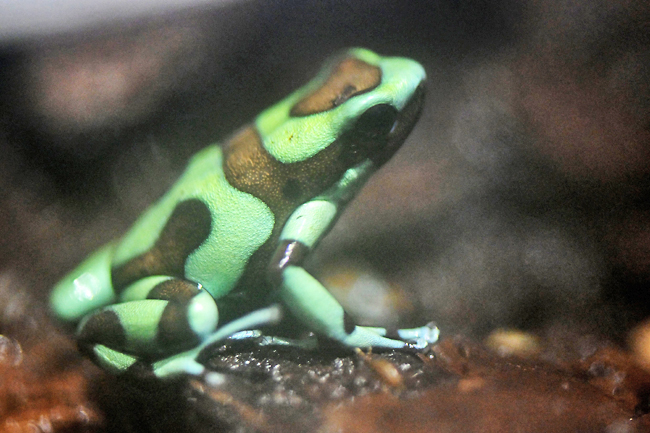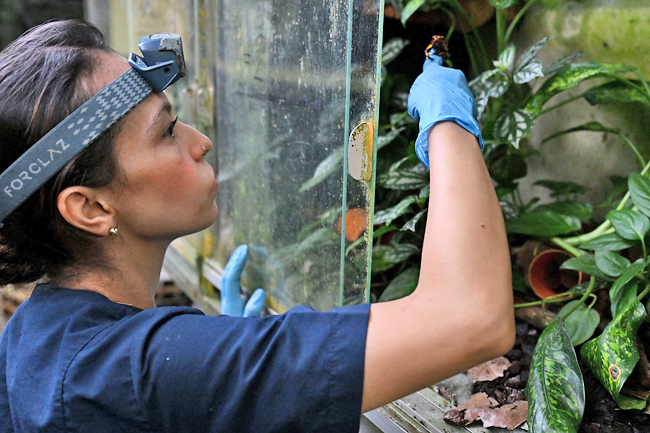COLOMBIA (AFP) – Down a dirt track in Colombia, deep in a forest, conservationists are breeding prized exotic frogs to try to undercut traffickers who are plundering the country’s jungles of its amphibians.
A critically-endangered harlequin poison-dart frog (oophaga histrionica) is among the 14 species bred for sale at the Tesoros de Colombia (Treasures of Colombia) laboratory near Bogota – one of several schemes worldwide to combat the illegal trade in wildlife by supplying specimens bred legally, in captivity.
The illegal trade in wild flora and fauna is the fourth-most profitable illicit business in the world, with annual revenues of USD23 billion, according to the United Nations (UN).
At the UN COP16 biodiversity conference starting this weekend in the Colombian city of Cali, delegates will discuss ways to combat poaching of everything from elephant ivory to pangolin scales.
In Colombia, which is home to about 10 percent of the world’s amphibians, poison dart frogs are captured alive in the Choco jungle and smuggled abroad to adorn foreign terrariums.
The venom causes collectors’ frissons: the frogs secrete a toxin that can cause respiratory failure.
To tame the trafficking of these and other species, some countries have authorised a legal trade in wildlife.
Costa Rica, another Latin American biodiversity hotspot, has licenced butterfly breeding schemes to try to protect its forest habitats.
“If there is an international demand for frogs, it is important to provide legal frogs that can also reproduce in (their new) home,” Tesoros de Colombia founder Ivan Lozano said.
Frog trafficking is a crime punishable by between five and almost 12 years in prison in Colombia, the world’s second-most biodiverse country after Brazil.
But in the United States (US) and many European countries, there is no ban on trafficked amphibians.
Tesoros de Colombia exports seven species of frog and is waiting on permits for seven others.
“When we export them we operate on the basis that they are going to a better place,” veterinary technician Alejandra Curubo told AFP, proudly showing off one of her charges which had just finished its metamorphosis from a tadpole.
From Colombia, some amphibians travelled more than 5,000 kilometres north to Michael Heinrichs’ terrarium in Colorado, US.
The 65-year-old collector, who works for a healthcare company, has amassed a collection of 40 specimens, including a poison-dart frog, which he keeps in a room he calls his “zen place”.
Heinrichs paid up to USD1,000 each for legally-traded specimens that come with a unique code based on their spot patterns.
“Each owner gets a unique frog, with traceability,” Lozano said.
The availability of legal amphibians has driven down prices for trafficked specimens.
The golden poison frog or phyllobates terribilis, used to be worth USD150. Now it comes with a list price of USD40.
Conservationists are divided on the merits of legalising the wildlife trade.
Science mazagine in its October 11 edition warned that legalising the seemingly insatiable market for rhino horn, used in traditional medicine in Asia, “could increase demand… and complicate law enforcement’s ability to distinguish legal sources from illegal sources.”
It took Lozano years before obtaining his first Colombian export permit.
Since he began exporting to the United States “the market for the illegal trade of animals from Colombia has really dried up,” Heinrichs, his customer in Colorado, said.
“Today it would be really hard” to find Colombian frogs in the US, he said.
Colombian police have also stepped up their efforts against traffickers.

